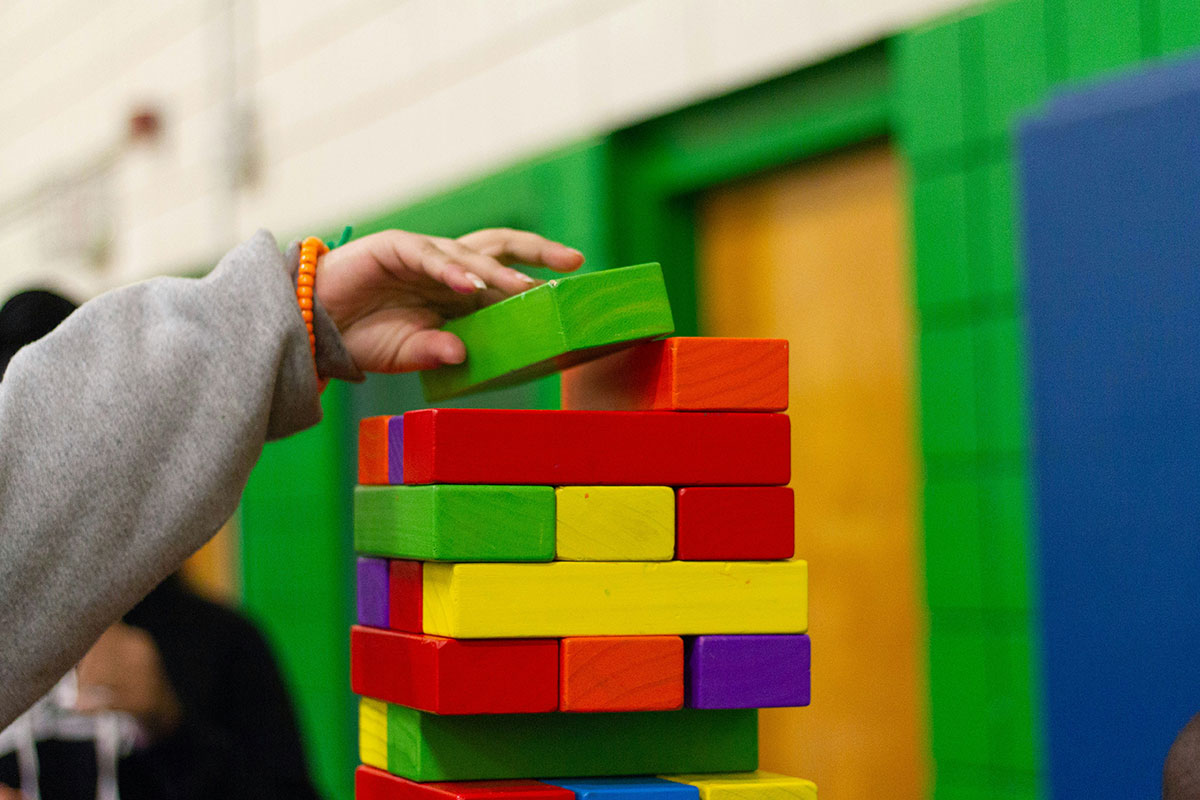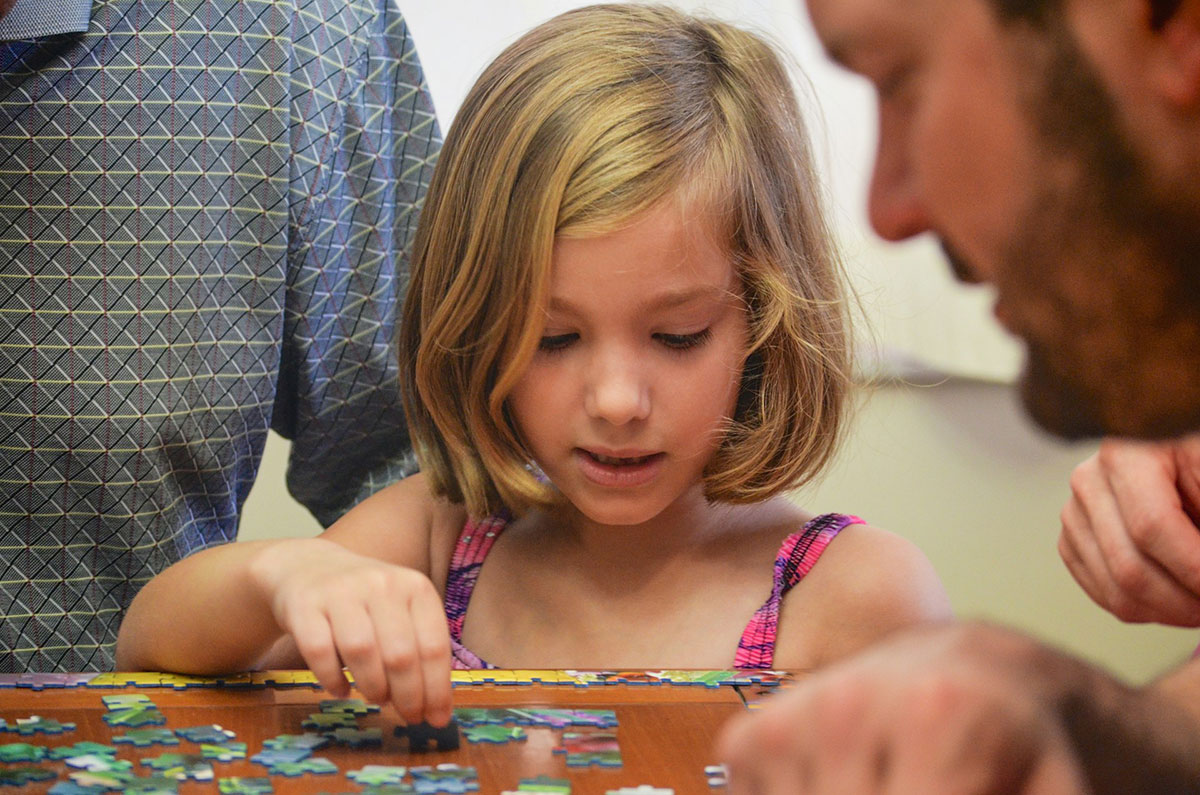Powering Up Families to Support Young Children’s Math Learning
by Kristen Reed

Photo by La-Rel Easter on Unsplash
Teachers and families share a common goal: helping children grow and thrive in school—not just academically, but socially and emotionally, too. Yet, despite this shared purpose, there’s often a disconnect. Many families feel unsure about how to support their children’s learning at home, and teachers can feel equally unsure about how best to engage families as partners. This gap in communication and collaboration highlights the need for intentional efforts to build stronger partnerships that empower both teachers and families to support children’s learning together.
The need for tools to bridge this gap is widespread. A national survey conducted by Gallup and Learning Heroes (2023) reveals that families want to be involved in their children’s education but often lack clear guidance from schools. Similarly, educators recognize the importance of family engagement but aren’t always equipped with the strategies or resources to make it happen. The good news? With intentional effort and the right tools, we can build strong partnerships that support children in meaningful, lasting ways.
Why Family Engagement in Math Matters
As educators, we know that children learn best through joyful, playful interactions with people they care about. We know that parents, as children’s first teachers, play a uniquely important role in influencing children’s mathematics learning and mathematical identity. Research consistently shows that children make greater strides in math when adults at home and in school work together to actively support their mathematical thinking.
In the classroom, young children who experience more math-focused activities make greater gains (Ginsburg et al., 2008; McCray & Chen, 2012). At home, everyday moments like playing number games, exploring shapes, or measuring ingredients during cooking can be just as important (Daucourt et al., 2022; Huntsinger et al., 2016). When teachers and families collaborate, they create a powerful partnership that reinforces learning across both environments—helping children build confidence, curiosity, and a strong foundation in math.

Photo by Broooke Lark on Unsplash
However, many parents, including highly educated parents, express uncertainty about how to support their child’s math learning. Studies reveal that parents often feel more confident helping with literacy but that they struggle with math. Studies reveal that parents often feel more confident helping with literacy but that they struggle with math. They frequently look to teachers for guidance on how to incorporate math into everyday life (Sonnenschein et al., 2020). This is where we, as educators, can step in—not just to teach children, but to empower families.
When teachers and families collaborate, the benefits ripple outward:
- Shared Learning Goals. Families and teachers working together can create a cohesive learning environment where skills are reinforced at school and at home.
- Confidence for Parents and Teachers. Clear communication and simple tools give both parents and teachers the confidence to support children’s math learning in complementary ways.
- Stronger Relationships. Partnering with families fosters trust and builds a sense of community, which positively affects the child’s overall growth and development.
Bridging the Gap: Strategies for Teachers
To foster collaboration, it’s critical to make math accessible and engaging for families. Here are some practical steps teachers can take to strengthen home-school communication and support early math learning.
- Provide Simple, Actionable Tools. Share easy activities that parents can do at home, like counting everyday objects, noticing shapes in their environment, or playing simple math games. Emphasize that learning opportunities are everywhere.
- Use Clear, Open Communication. Send regular updates through phone calls, newsletters, emails, or apps that highlight classroom activities and provide ideas for extending learning at home. Invite parents to share their questions or concerns about supporting math learning.
- Model Math Engagement. Host family math nights or workshops where teachers and families both share ways to integrate math into everyday life. Teachers and families can describe the ways that they engage children in meaningful math conversations and activities.
- Create Take-Home Resources. Develop math kits or handouts with instructions for interactive activities families can do together. Include resources for families at different levels of comfort and confidence with math.
- Celebrate Collaboration. Share success stories from families who have tried new activities or approaches. This encourages others to get involved and fosters a culture of teamwork.

Photo by Debby Hudson on Unsplash
A Path to Thriving Together
By focusing on shared goals and building strong communication, teachers and families can create an environment where children thrive—not just in math, but in all areas of their development. Collaboration isn’t just about improving academic outcomes, it’s about fostering confidence, curiosity, and connection. With intentional strategies and tools, we can ensure that math becomes more than just numbers. It becomes a bridge—a way to connect home and school, empower families, and help every child reach their full potential.
Here are some resources to explore that are designed to support home-school connections and empower families to engage in math at home.
- Young Mathematicians at Education Development Center has over 55 math games designed for family and classroom use with children ages 3–7 years old. There are short instructional videos and direction sheets in English, Spanish, Portuguese, and Haitian Creole to make it easy to share with linguistically diverse families and that include tips for families about how to play. The videos are also available on YouTube and Instagram.
- DREME Family Math provides examples of ways to incorporate family math into cooking, daily routines, games, and books.
- PBS SoCal Family Math has tools and bilingual resources that help families with children ages 2–5 uncover the joy of math in everyday experiences. Also follow them on Instagram.
- Storytelling Math books celebrate the idea that every child can be a mathematical thinker. These stories highlight children of color engaging with math through play, creativity, and exploration of their surroundings. They also include activities for families to enjoy together. Beyond basic counting and shapes, Storytelling Math introduces key concepts that support young children’s future success in school.
References
Daucourt, M. C., Napoli, A. R., Quinn, J. M., Wood, S. G., & Hart, S. A. (2021). The home math environment and math achievement: A meta-analysis. Psychological Bulletin, 147(6), 565–596.
Ginsburg, H., Lewis, A., & Clements, M. (2008, October 21–22). School readiness and early childhood education: What can we learn from federal investments in research on mathematics programs? Working paper prepared for A Working Meeting on School Readiness Research: Guiding the Synthesis of Early Childhood Research, sponsored by the US Department of Health and Human Services, Washington, DC.
Huntsinger, C. S., Jose, P. E., & Luo, Z. (2016). Parental facilitation of early mathematics and reading skills and knowledge through encouragement of home-based activities. Early Childhood Research Quarterly, 37, 1–15.
McCray, J., & Chen, J.-Q. (2012). Pedagogical content knowledge for preschool mathematics: Construct validity of a new teacher interview. Journal of Research in Childhood Education, 26(3), 291–307.
Sonnenschein, S., Stites, M., & Dowling, R. (2021). Learning at home: What preschool children’s parents do and what they want to learn from their children’s teachers. Journal of early childhood Research, 19(3), 309–322.
The contents of this blog post were developed under a grant from the Department of Education. However, those contents do not necessarily represent the policy of the Department of Education, and you should not assume endorsement by the Federal Government.
This work is licensed under CC BY-NC-SA 4.0
Math for All is a professional development program that brings general and special education teachers together to enhance their skills in
planning and adapting mathematics lessons to ensure that all students achieve high-quality learning outcomes in mathematics.
